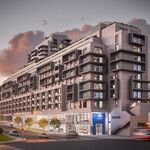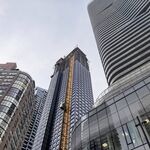^^ I've said a couple times that I'd rather have an Eglinton subway that goes to Jane and Don Mills, which could be easily extended in the future, than the current LRT proposal. Doing that would free up some money for projects like Sheppard or extending the B-D to STC, which should be happening in Transit City.
I haven't seen the actual data, but I would venture a guess that the passenger loads between Don Mills and Kennedy, and Jane and Martin Grove are well within the limits of BRT. Transfers seem to be acceptable everywhere else on TC *cough* Sheppard East *cough*, so why not where it somewhat makes sense? An Eglinton subway from Jane to Don Mills would bisect 4 rapid transit lines (5 if the western leg of the DRL is extended up to or past Eglinton). I'd say that's a pretty sufficient "crosstown".




